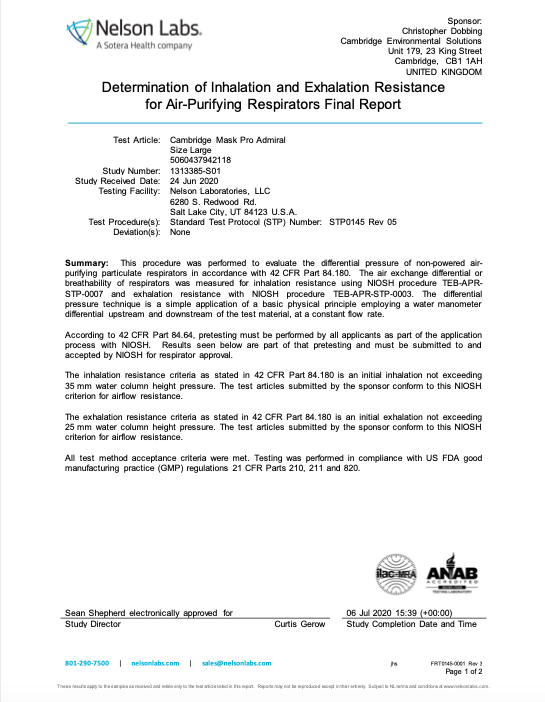Inhalation and exhalation resistance represents how difficult it is to breath in and out while wearing the mask. A comfortable mask would have both low inhalation and exhalation resistances. This is measured by calculating the differential pressure (Delta P), which is a comparison of the pressure on either side of the mask.
In this test, a manometer (U-shaped tube with liquid inside) was used to measure the Delta P. Depending on how the liquid, which in this case is water, moves further up or down one side of the U-shaped tube, we get a measurement of resistance in millimetres of H2O.
The FDA requires that the inhalation resistance does not exceed 35mm H2O and that the exhalation resistance does not exceed 25mm H2O. The PRO mask has an average inhalation resistance of 8.5mm H2O and an average exhalation resistance of 5.47mm H2O.
If you have further question, please contact us by email at info@cambridgemask.com or Chat button on our sites to connect with our Customer Service Team.













